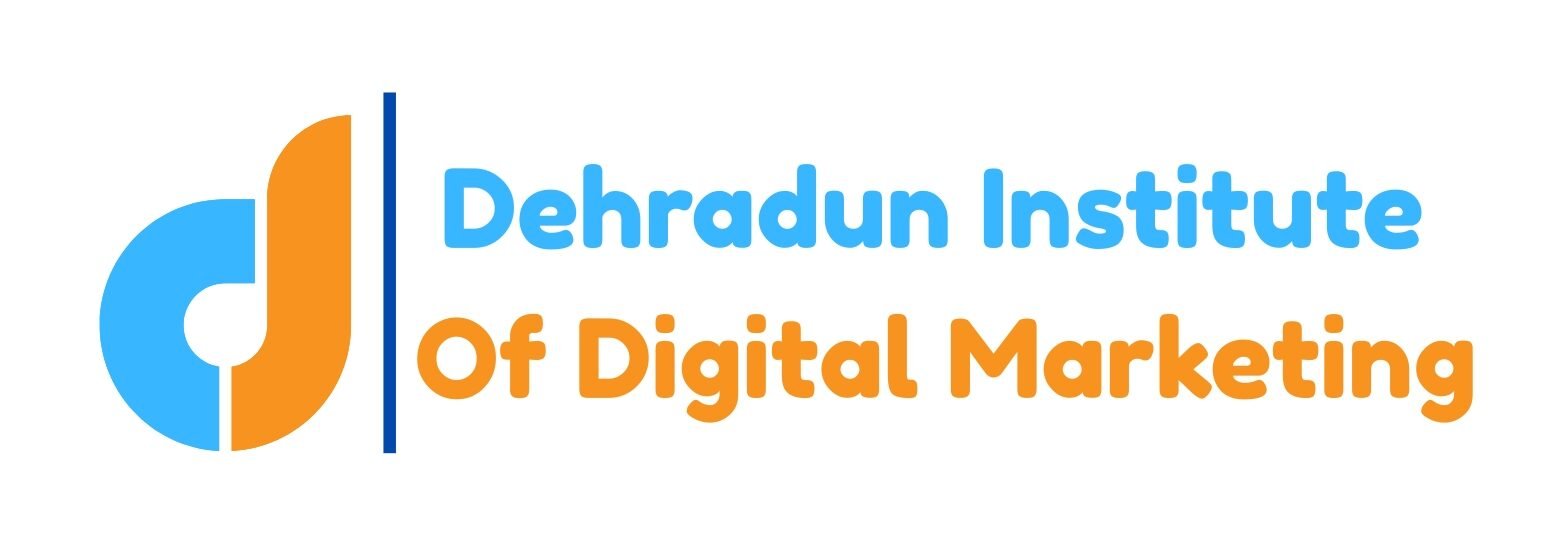Content Marketing

Best Content Marketing Company in Dehradun
“Content is the king!”
Your content should represent your business, reflect your business values, and help attract new customers. DIDM is doing the same. If your content is not optimized for your target audience, you’ll lose attention and confidence. It could even put your reputation at risk.
Our content marketing company in Dehradun knows what works because we’ve been doing it ourselves for years. We’ve seen how difficult it can be to get enough attention from customers when they’re looking for information about a product or service they’re not familiar with.
So we’ve built a Best Content Marketing team of experts who are ready to help you get the most out of your website and social presence. We will make sure that you have a high-quality website with high-quality content that attracts new customers and keeps existing ones coming back for more!

Graphic Design Led Content Marketing Services

E-Book Content Marketing Services

Guest Posting Content Service

Website Content Writing Services

Why You Should Choose Our Content Marketing Services?
Content Marketing is a great way to get your business out there and let people know who you are and what you have to offer. Digital Folks content marketing services help you create content that will keep your audience engaged, whether that’s through social media posts, blog posts, email newsletters, or even webinars.
We’ve got years of experience working with clients like yours, so we know how to make sure your content is SEO-friendly and will get shared by people in your industry. Our content team has worked hard to make sure that every piece of content we are writing is high-quality and engaging—we want it to be something people want to read!

What are the Importance of Content Marketing Services?
If you aren’t using content marketing services, then you’re missing out on a lot of opportunities to grow your brand, both online and off. The internet is full of billions of people who are looking for information about everything from how to cook healthy meals at home to how to find the perfect job in this economy. And if you want those people to know about your company or service, then content marketing services are one way that will help them find out about it! Some of the Importance of taking services are given below.
- Your audience will stick around longer
- You’ll have better traction on social media
- Your audience will trust you
- You’ll generate more and better leads
- Original content can improve conversions
- Your business will become more visible thanks to SEO
How DIDM will help you through Content Marketing Services?
DIDM is your go-to partner for content marketing services. We can help you with all aspects of your digital strategy, from content creation to social media management, so that you can focus on what matters most: serving your customers!
We work hard to create engaging, relevant and high-quality content that will generate leads, boost your brand’s visibility and increase customer engagement. We take the time to understand your business goals before we begin crafting each piece of content, ensuring that our messages resonate with your target audience. Our team is made up of highly skilled writers who are experts in their fields and are committed to creating exceptional work that will help you achieve your goals.

DIDM—SEO Company in Dehradun
Dehradun Institute of Digital Marketing is a digital marketing agency that provides small businesses and startups with SEO services. We believe that every business deserves visibility on the web, and we’re here to make sure your business gets it! In just 2 years, we have completed more than 100+ client projects. Our SEO goals are:
- Boost rankings to raise awareness of your business
- Target informational keywords
- Focus on adding value for searchers
- Establish authority in search results
- Target transactional keywords
- Promote your business
- Drive purchases

Introduction to Content Marketing
1. What is Content Marketing?
A strategic marketing approach focused on creating and distributing valuable, relevant, and consistent content to attract and retain a clearly defined audience — and ultimately, to drive profitable customer action.
2. History and Evolution
From traditional print media to digital blogs, videos, podcasts.
Major evolution with the rise of search engines and social media platforms.
3. Importance in Digital Marketing
Builds trust and authority.
Drives organic traffic via SEO.
Supports lead generation and nurturing.
Encourages engagement and brand loyalty.
4. Inbound vs Outbound Marketing
Inbound: Pulls the audience in with helpful content (e.g., blog posts, SEO, YouTube).
Outbound: Pushes a message out (e.g., cold calls, TV ads).
5. Content Marketing Funnel
Top (Awareness): Blog posts, social media, infographics.
Middle (Consideration): Webinars, eBooks, email newsletters.
Bottom (Decision): Case studies, product demos, free trials.
6. Types of Content
Text: Blogs, articles, guides
Video: Tutorials, interviews, animations
Audio: Podcasts, voiceovers
Visual: Infographics, memes, charts
7. B2B vs B2C Content Strategies
B2B: Focus on data-driven, educational content (e.g., white papers, reports)
B2C: Emphasize entertainment, emotional appeal (e.g., social media posts, videos)
Content Marketing Strategy
1. Setting SMART Goals
Specific, Measurable, Achievable, Relevant, Time-bound
Example: “Increase blog traffic by 30% in 3 months.”
2. Understanding Your Audience
Creating buyer personas (age, profession, challenges, goals)
Conducting surveys, interviews, and analyzing customer data
Mapping content to customer pain points
3. Customer Journey Mapping
Awareness → Consideration → Decision stages
Matching content types to each stage (blogs, eBooks, case studies)
4. Competitor Research
Analyzing top-performing content from competitors
Identifying gaps and opportunities in their strategy
Tools: BuzzSumo, Ahrefs, SEMrush
5. Content Gap Analysis
Audit your current content
Find topics your competitors cover but you don’t
Create new content to fill those gaps
6. Content Planning & Calendar Creation
Developing a 30/60/90-day content calendar
Include content types, topics, authors, deadlines, and publishing dates
Tools: Google Sheets, Trello, Notion, Asana
7. Choosing the Right Content Channels
Based on where your audience spends their time:
LinkedIn (B2B), Instagram (Visual B2C), YouTube (Video), Blog (SEO)
Use 80/20 rule: 80% helpful/educational, 20% promotional content
Content Creation
1. Types of Content
Written: Blog posts, articles, whitepapers, eBooks
Visual: Infographics, images, charts
Video: Explainers, product demos, tutorials
Audio: Podcasts, interviews
Interactive: Quizzes, polls, assessments
2. Writing for the Web
Use short paragraphs and subheadings
Use simple, clear language (avoid jargon)
Include calls-to-action (CTAs)
Make it skimmable: bullets, bold text, lists
3. Storytelling Techniques
Hero’s Journey structure
Create relatable characters or customer stories
Focus on emotion + logic (emotional hook with rational benefit)
4. SEO Basics for Content Creators
Keyword research: Google Keyword Planner, Ubersuggest
Use keywords naturally in title, headers, and content
Meta descriptions, alt tags for images
Internal linking to related content
5. Content Formatting Tips
Use H1, H2, H3 tags properly
Add visuals or videos to break up text
Optimize for mobile readability
6. Tools for Content Creation
Writing & Editing: Grammarly, Hemingway
Graphics: Canva, Adobe Express
Video: CapCut, InShot, Adobe Premiere
Audio: Audacity, Anchor
7. Repurposing Content
Turn blog posts into infographics
Turn webinars into YouTube videos
Slice podcasts into short social clips
Content Optimization for SEO
1. Introduction to On-Page SEO
Title tags, meta descriptions
Heading structure (H1, H2, H3)
Image optimization (alt text, compression)
URL structure (short, descriptive)
2. Keyword Research
Short-tail vs. long-tail keywords
Intent-based keywords: informational, transactional, navigational
Tools: Google Keyword Planner, Ubersuggest, Ahrefs, SEMrush
3. Using Keywords Effectively
Placement: title, first 100 words, subheadings, conclusion
Avoid keyword stuffing
Use semantic keywords and LSI (Latent Semantic Indexing) terms
4. Internal and External Linking
Link to relevant pages within your own website (internal linking)
Link to credible sources outside your site (external linking)
5. Mobile Optimization
Responsive design
Fast loading speeds
Use Google’s Mobile-Friendly Test
6. Content Readability
Use simple sentence structures
Keep paragraphs short
Use bullet points, lists, and visuals to aid understanding
7. Technical SEO Basics for Content Creators
XML sitemaps
Robots.txt
Canonical tags
Website speed and Core Web Vitals (basic awareness)
8. Measuring Content SEO Performance
Use Google Analytics to track organic traffic
Use Google Search Console for impressions, clicks, CTR
Track keyword rankings using SEO tools
Content Distribution Channels
1. Owned, Earned, and Paid Media
Owned: Your website, blog, email list, app
Earned: Shares, mentions, backlinks, PR
Paid: Sponsored posts, display ads, influencer partnerships
2. Social Media Distribution
Platforms: Facebook, Instagram, LinkedIn, Twitter, YouTube, Pinterest
Best practices:
Post consistently
Use platform-specific formats (Reels, Stories, Carousels)
Use hashtags strategically
Engage with comments and messages
3. Email Marketing
Build and segment your list
Types of content: newsletters, curated links, product updates
Tools: Mailchimp, ConvertKit, Moosend
Best practices:
Clear subject lines
One CTA per email
Mobile-optimized layouts
4. Content Syndication
Republishing content on third-party sites (e.g., Medium, LinkedIn Articles)
Benefits: reach new audiences, backlinks, visibility
Note: Use canonical tags to avoid duplicate content issues
5. Paid Promotion Techniques
Boosting posts on Facebook/Instagram
Google Display Ads and Native Ads
Influencer marketing and sponsored content
6. Communities and Forums
Share content in relevant Facebook groups, Reddit, Quora
Engage genuinely, avoid spammy behavior
7. Partnerships and Collaborations
Co-marketing with brands
Guest blogging
Podcast guest appearances
Content Calendar & Planning
1. Why You Need a Content Calendar
Keeps your content consistent and organized
Ensures alignment with marketing goals
Helps coordinate teams and avoid missed deadlines
2. Components of a Content Calendar
Content Title/Topic
Format/Type (blog post, video, infographic, etc.)
Channel (website, Instagram, email, etc.)
Author/Owner
Deadline & Publish Date
Target Audience or Persona
Goal or CTA
3. Planning Content by Funnel Stage
Top of Funnel (TOFU) Awareness content (blogs, videos, infographics)
Middle of Funnel (MOFU) –Consideration content (case studies, webinars)
Bottom of Funnel (BOFU) – Conversion content (free trials, demos, testimonials)
4. Editorial Calendar Tools
Simple tools: Google Sheets, Excel
Advanced tools: Trello, Notion, Asana, Airtable, CoSchedule
5. Frequency and Consistency
Determine posting frequency for each channel (e.g., 2 blog posts/week, daily Instagram Stories)
Stay consistent with tone, voice, and timing
6. Brainstorming & Content Ideation
Use audience FAQs, forums, comments, Google Trends
Brainstorm ideas as a team or with AI tools
Maintain an idea bank for future posts
7. Scheduling & Automation
Use social media schedulers: Buffer, Hootsuite, Later
Schedule blog posts with WordPress or CMS tools
Use tools that allow cross-posting and analytics
8. Tracking & Adjusting Calendar
Regularly review what’s working
Adjust content types, timing, and topics based on performance
Track missed deadlines or over-performing topics for insights
Measuring Content Performance
1. Why Measure Content?
Understand what resonates with your audience
Improve future content strategies
Justify ROI and resource allocation
2. Key Performance Indicators (KPIs)
Traffic: Pageviews, unique visitors (Google Analytics)
Engagement: Time on page, bounce rate, scroll depth, comments
SEO Metrics: Keyword rankings, impressions, organic CTR (Google Search Console)
Social Metrics: Shares, likes, comments, saves, reach
Lead Generation: Email signups, downloads, inquiries
Conversions: Sales, form submissions, trial sign-ups
3. Using Google Analytics
Track sessions, behavior flow, and top content
Analyze traffic sources: organic, direct, referral, social
Set up conversion goals to measure CTA effectiveness
4. Using Google Search Console
Monitor keyword rankings
Analyze click-through rates (CTR) for pages
Identify pages with high impressions but low CTR for optimization
5. Social Media Analytics
Platform-native tools (Meta Insights, LinkedIn Analytics, X/Twitter Analytics, YouTube Studio)
Track engagement rate and follower growth
Identify top-performing content per platform
6. Content Audit Basics
Review all published content
Analyze performance metrics
Update, repurpose, or delete underperforming content
7. A/B Testing
Headlines, CTAs, images, and formats
Use tools like Google Optimize, Unbounce, HubSpot
Improve conversion and engagement rates
8. Reporting & Dashboards
Build monthly/quarterly reports
Use tools like Google Data Studio, HubSpot, or Excel
Share insights with stakeholders or team
Content Repurposing & Upcycling
1. What Is Content Repurposing?
Reusing existing content in different formats or platforms
Maximizes reach, improves ROI, and saves time
2. Why Repurpose Content?
Reach new audiences
Reinforce your message
Improve SEO by spreading keyword-rich content
Cater to different learning styles (visual, audio, reading)
3. Popular Repurposing Strategies
Blog → Video: Convert blog posts into explainer videos or YouTube content
Blog → Social Media Posts: Break down key points into bite-sized carousels or Reels
Webinar → Blog Post or Infographic
Podcast → Quote Graphics + Blog Summary
Statistics → Visual Charts or Instagram Posts
4. Repurposing for Different Platforms
Adjust tone and format based on platform (LinkedIn vs. Instagram vs. YouTube)
Optimize aspect ratios and lengths (e.g., 1-minute Reels vs. 10-minute YouTube videos)
5. Content Refreshing vs. Repurposing
Refreshing: Update stats, improve SEO, rewrite content for clarity
Repurposing: Present the content in a new format or for a new audience
6. Creating Evergreen Content
Focus on topics that remain relevant over time
Examples: how-tos, tutorials, FAQs, industry definitions
Easier to repurpose without frequent updates
7. Using Tools for Repurposing
Text to video: Lumen5, InVideo, Pictory
Text to audio: Podcast recording tools
Design: Canva, Adobe Express
Scheduling: Buffer, Later, Hootsuite
8. Best Practices
Track what repurposed formats work best
Maintain a repurposing log in your content calendar
Don’t post the exact same thing everywhere—adapt per audience and platform
Storytelling in Content Marketing
1. What is Storytelling in Marketing?
The use of narrative to engage, connect, and inspire your audience
Builds emotional connections and brand loyalty
Makes your message memorable and relatable
2. Why Storytelling Matters
People remember stories more than facts
Builds trust and credibility
Drives emotional engagement and encourages sharing
3. Elements of a Great Story
Character: Your audience, customer, or brand
Conflict: A challenge the character faces
Resolution: How your product/service solves the challenge
Emotion: Connects deeply with the reader/viewer
Message: Core takeaway or value
4. Types of Stories in Content Marketing
Customer Success Stories (Case Studies, Testimonials)
Founder’s Story (Brand Origin)
Behind the Scenes (Team, culture, process)
Educational Stories (Explain complex ideas with relatable narratives)
User-Generated Stories (Shared experiences from real users)
5. Storytelling Formats
Written blog posts and email newsletters
Video storytelling (brand ads, interviews)
Infographics and visual stories
Podcasts and audio interviews
Instagram Stories, Reels, and carousels
6. Brand Voice & Tone in Storytelling
Stay consistent with tone across platforms (friendly, inspiring, humorous, etc.)
Align voice with your brand personality and audience expectations
7. Frameworks to Use
The Hero’s Journey
Problem – Agitate – Solution (PAS)
Before – After – Bridge
FAB (Features – Advantages – Benefits)
8. Storytelling Tools
Canva for visual storytelling
Grammarly for improving tone and clarity
Lumen5/InVideo for video stories
Notion/Trello for drafting narratives
9. Examples of Successful Storytelling
Apple: Emotional product launches
Nike: Inspirational athlete stories
Airbnb: Customer travel stories
Creating a Content Marketing Strategy
1. What is a Content Strategy?
A plan that outlines your content goals, target audience, formats, platforms, and publishing schedule
Aligns your content with your overall business and marketing goals
2. Steps to Build a Content Marketing Strategy
Step 1: Set SMART Goals
Specific, Measurable, Achievable, Relevant, Time-bound
E.g., Increase blog traffic by 30% in 3 months
Step 2: Define Your Target Audience
Create buyer personas (demographics, pain points, interests)
Understand what content formats your audience prefers
Step 3: Content Audit (If Applicable)
Review existing content
Analyze performance
Identify content to update, delete, or repurpose
Step 4: Decide Content Types & Formats
Blog posts
Videos
Infographics
Webinars
Podcasts
Social media content
Emails
Step 5: Choose Distribution Channels
Website/blog
Social media platforms
Email newsletters
YouTube
Influencers & communities
Step 6: Create a Content Calendar
Plan content topics, formats, authors, and publish dates
Use tools like Google Sheets, Trello, Notion, or Asana
Step 7: Assign Roles and Resources
Writers, designers, videographers, editors, SEO experts
Define responsibilities and timelines
Step 8: Promotion Strategy
SEO for organic reach
Paid promotion (social ads, Google Ads)
Influencer collaborations
Email marketing
Step 9: Measure & Analyze Performance
Use KPIs defined in Module 7
Adjust strategy based on insights
3. Content Governance
Guidelines for tone, grammar, visuals, and approvals
Version control, ownership, and republishing rules
4. Common Mistakes to Avoid
Creating content without audience research
Inconsistent publishing
Ignoring SEO or analytics
Not repurposing high-performing content
5. Recommended Tools
Planning: Notion, Trello, ClickUp
Writing: Grammarly, Hemingway
Design: Canva, Figma
Analytics: Google Analytics, HubSpot, SEMrush
